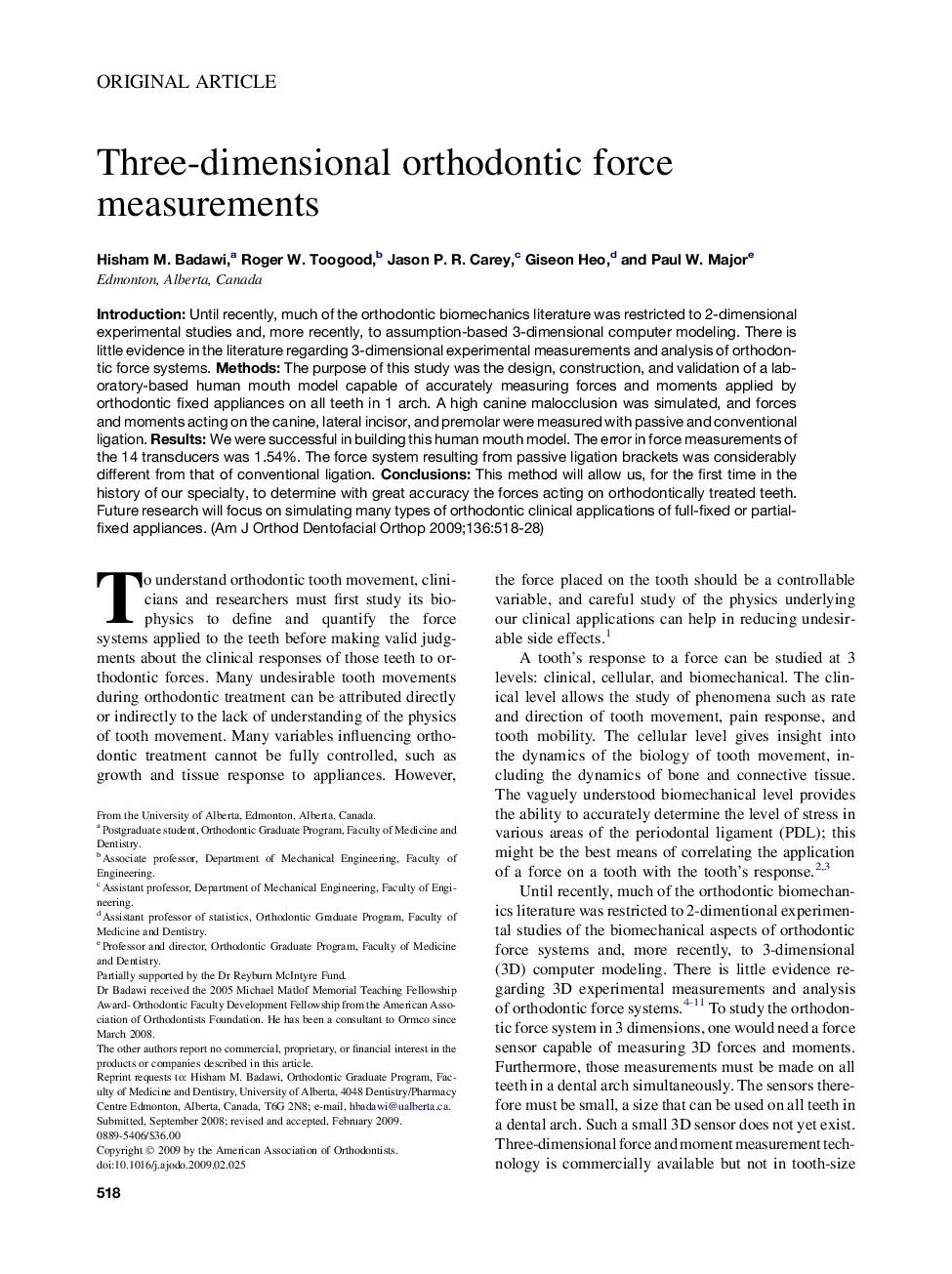| Article ID | Journal | Published Year | Pages | File Type |
|---|---|---|---|---|
| 3119840 | American Journal of Orthodontics and Dentofacial Orthopedics | 2009 | 11 Pages |
IntroductionUntil recently, much of the orthodontic biomechanics literature was restricted to 2-dimensional experimental studies and, more recently, to assumption-based 3-dimensional computer modeling. There is little evidence in the literature regarding 3-dimensional experimental measurements and analysis of orthodontic force systems.MethodsThe purpose of this study was the design, construction, and validation of a laboratory-based human mouth model capable of accurately measuring forces and moments applied by orthodontic fixed appliances on all teeth in 1 arch. A high canine malocclusion was simulated, and forces and moments acting on the canine, lateral incisor, and premolar were measured with passive and conventional ligation.ResultsWe were successful in building this human mouth model. The error in force measurements of the 14 transducers was 1.54%. The force system resulting from passive ligation brackets was considerably different from that of conventional ligation.ConclusionsThis method will allow us, for the first time in the history of our specialty, to determine with great accuracy the forces acting on orthodontically treated teeth. Future research will focus on simulating many types of orthodontic clinical applications of full-fixed or partial-fixed appliances.
